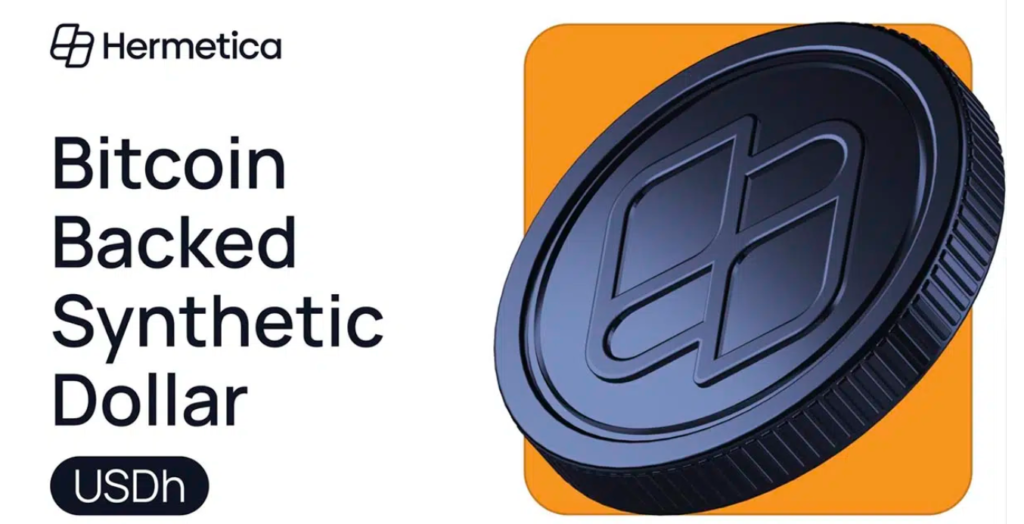The first Bitcoin-native synthetic dollar USDh is looking to launch by June and promises a 25% yield.

The new synthetic dollar, USDh, is expected to provide users with yields of up to 25% when released in June, according to an announcement by Hermetica that was shared with Cointelegraph.
Jakob Schillinger, founder and CEO of Hermetica Labs, asserts that the new synthetic dollar will enable Bitcoin holders to hold and earn interest on their U.S. dollars without exposing themselves to non-Bitcoin-related products or requiring confidence in the banking system.
Schillinger communicated with Cointelegraph:
“USDh will play a pivotal role in bringing increased liquidity and new use-cases to Bitcoin DeFi, allowing Bitcoiners to trade, lend, and transact in a dollar asset that is fully backed by Bitcoin.”
Hermetica, a Stacks-native DeFi protocol on Bitcoin, is an integral component of the Bitcoin DeFi (BTCFi) movement, which endeavors to integrate DeFi functionalities into the inaugural blockchain network globally.
Is a 25% yield long-term sustainable?
The introduction of the initial synthetic dollar secured by Bitcoin occurred two months after the launch of Ethena’s USDe, which offered holders a 27.6% yield and sparked extensive apprehension regarding the sustainability of the protocol.
Analogous apprehensions may manifest regarding Hermetica’s USDh, given that its annual percentage yield (APY) of 25% surpasses that of Anchor Protocol’s 20% on TerraUSD (UST) before the demise of the algorithmic stablecoin issuer Terra in May 2022.
According to the CEO of Hermetica, futures funding rates generate a sustainable yield. Schillinger elaborated:
“This Bitcoin-native yield fluctuates with the market’s demand for long leverage. Our backtest data from January 2021 to March 2024 shows an average APY of 11.71%. In the 2022 bull market, the annual return was 26.11%.”
Additionally, demand for Bitcoin futures will maintain a sustainable USDh yield, according to Schillinger:
“The yield is sustainable due to the structural demand for long leverage in the Bitcoin futures markets.”
An expanding number of protocols are constructing DeFi and utility capabilities atop Bitcoin, the most secure blockchain network in the world. Schillinger considers the introduction of Ordinals one of the most significant catalysts for developing BTCFi. What he stated was:
“We believe Bitcoin DeFi will match and eclipse the size of Ethereum DeFi in the next 5 years. We’re already seeing months where Ordinals trading volumes are higher than volumes for Ethereum and Solana NFTs combined. With over $1T in latent BTC capital, Bitcoin DeFi is primed for explosive growth.”

